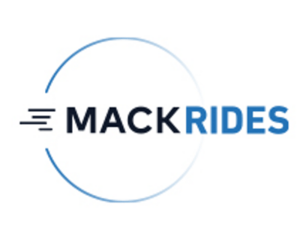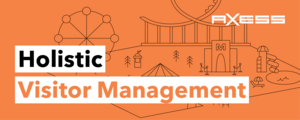New Wadden Sea Visitor Center in Lauwersoog: Hands-on Experiences & Storytelling
(eap) In the Dutch coastal village of Lauwersoog, the new Werelderfgoedcentrum Waddenzee (short: WEC, English: “Wadden Sea World Heritage Center”) recently opened its doors. The facility aims to educate visitors about this unique North Sea habitat through interactive elements and storytelling. Administrated by the Stichting Werelderfgoedcentrum foundation, the center also serves as a seal rescue and research station and is now the new location of the former Pieterburen Seal Sanctuary.
 Photo: Tjeerd Visser
Located directly at the harbor of Lauwersoog, the new visitor center invites guests on a multisensory journey through themed zones. Across five distinct zones, visitors can explore a wealth of information – from the geological formation of the Wadden Sea and human influence on the region to tidal rhythms and ecological interdependencies. One highlight is an interactive Wadden model table where guests can discover how the tidal flats were formed, and an immersive underwater journey alongside fish invites to hear what they hear and to experience a passage through sluices and pumping stations from a fish’s perspective.
Photo: Tjeerd Visser
Located directly at the harbor of Lauwersoog, the new visitor center invites guests on a multisensory journey through themed zones. Across five distinct zones, visitors can explore a wealth of information – from the geological formation of the Wadden Sea and human influence on the region to tidal rhythms and ecological interdependencies. One highlight is an interactive Wadden model table where guests can discover how the tidal flats were formed, and an immersive underwater journey alongside fish invites to hear what they hear and to experience a passage through sluices and pumping stations from a fish’s perspective.
 Photo: Tjeerd Visser
Seven fictional characters serve as guides, who each tell a different part of the Wadden story. Among them are “Pieter the Seal,” “Tibby the Shark,” and “Tom the Diatom.” The interior design also reflects the center’s core theme: A membrane of suspended ropes filters incoming natural light, mimicking the changing textures and lighting conditions of the Wadden. The experience concludes with a walkthrough that leads directly through the seal rescue center, offering insights into active marine conservation.
Photo: Tjeerd Visser
Seven fictional characters serve as guides, who each tell a different part of the Wadden story. Among them are “Pieter the Seal,” “Tibby the Shark,” and “Tom the Diatom.” The interior design also reflects the center’s core theme: A membrane of suspended ropes filters incoming natural light, mimicking the changing textures and lighting conditions of the Wadden. The experience concludes with a walkthrough that leads directly through the seal rescue center, offering insights into active marine conservation.
 Photo: Stella Dekker
The building housing the Wadden Sea World Heritage Center is a new structure designed by Danish architecture firm Dorte Mandrup. It features several notable sustainability elements. In addition to large panoramic windows offering sweeping views of the Wadden Sea, the building is insulated with material made from recycled denim jeans. Marine animal models, produced using 3D printing technology, were created from medical waste; paving stones outside the building originate from plastic debris collected in the Wadden Sea; and the wooden parasols on-site were previously used as mooring posts in a German harbor, according to WEC.
Photo: Stella Dekker
The building housing the Wadden Sea World Heritage Center is a new structure designed by Danish architecture firm Dorte Mandrup. It features several notable sustainability elements. In addition to large panoramic windows offering sweeping views of the Wadden Sea, the building is insulated with material made from recycled denim jeans. Marine animal models, produced using 3D printing technology, were created from medical waste; paving stones outside the building originate from plastic debris collected in the Wadden Sea; and the wooden parasols on-site were previously used as mooring posts in a German harbor, according to WEC.
 Photo: Niels Knelis
The spatial and exhibition design was developed by Dutch firm NorthernLight, which also contributed to the recently opened Chocolate Factory in Veghel and has a long list of other leisure experience projects to its name. Additional project partners for the WEC included Fiction Factory (production), YIPP (interactive media content), Ata Tech (hardware), Shosho (AV solutions), and 50Lux for lighting design. ■
Photo: Niels Knelis
The spatial and exhibition design was developed by Dutch firm NorthernLight, which also contributed to the recently opened Chocolate Factory in Veghel and has a long list of other leisure experience projects to its name. Additional project partners for the WEC included Fiction Factory (production), YIPP (interactive media content), Ata Tech (hardware), Shosho (AV solutions), and 50Lux for lighting design. ■





